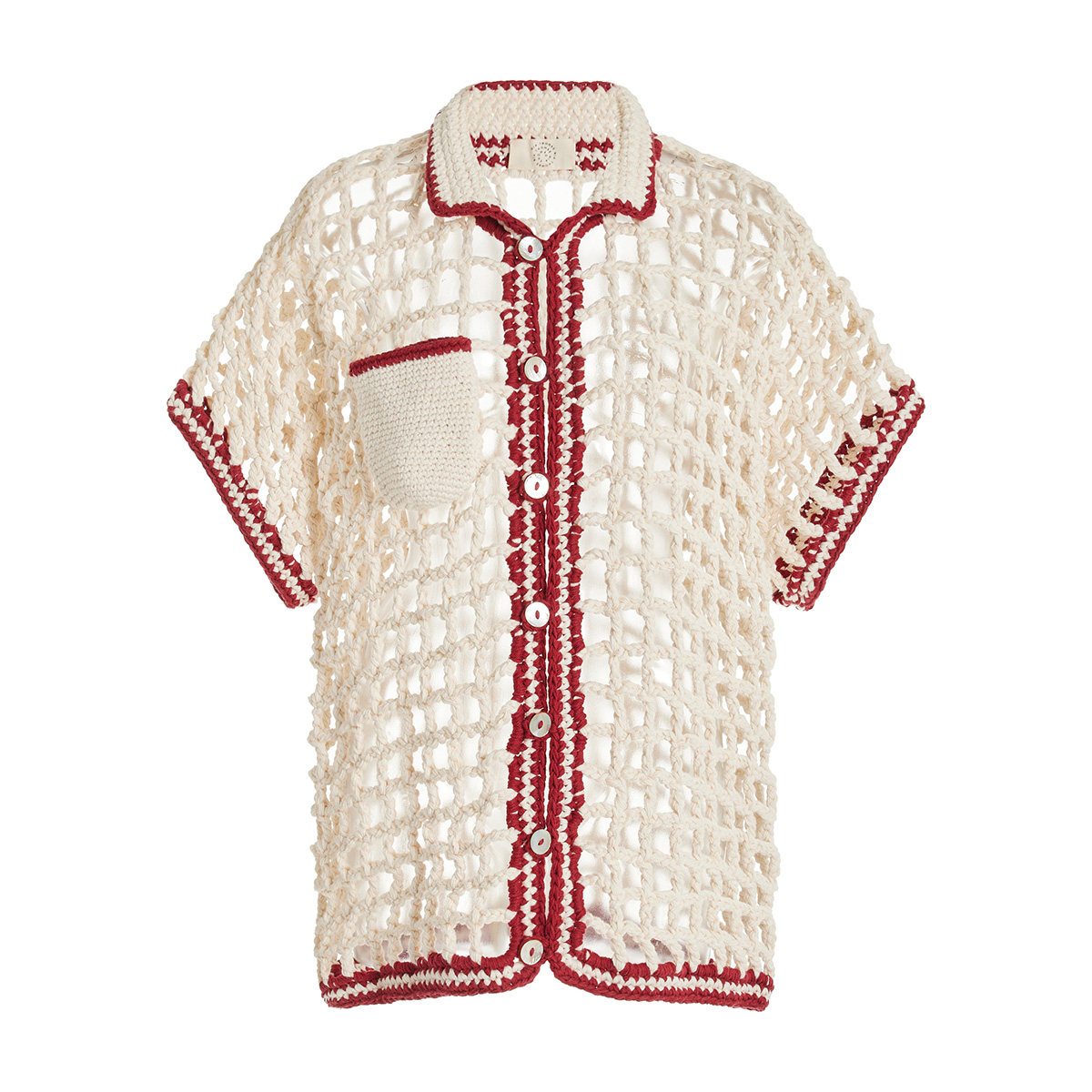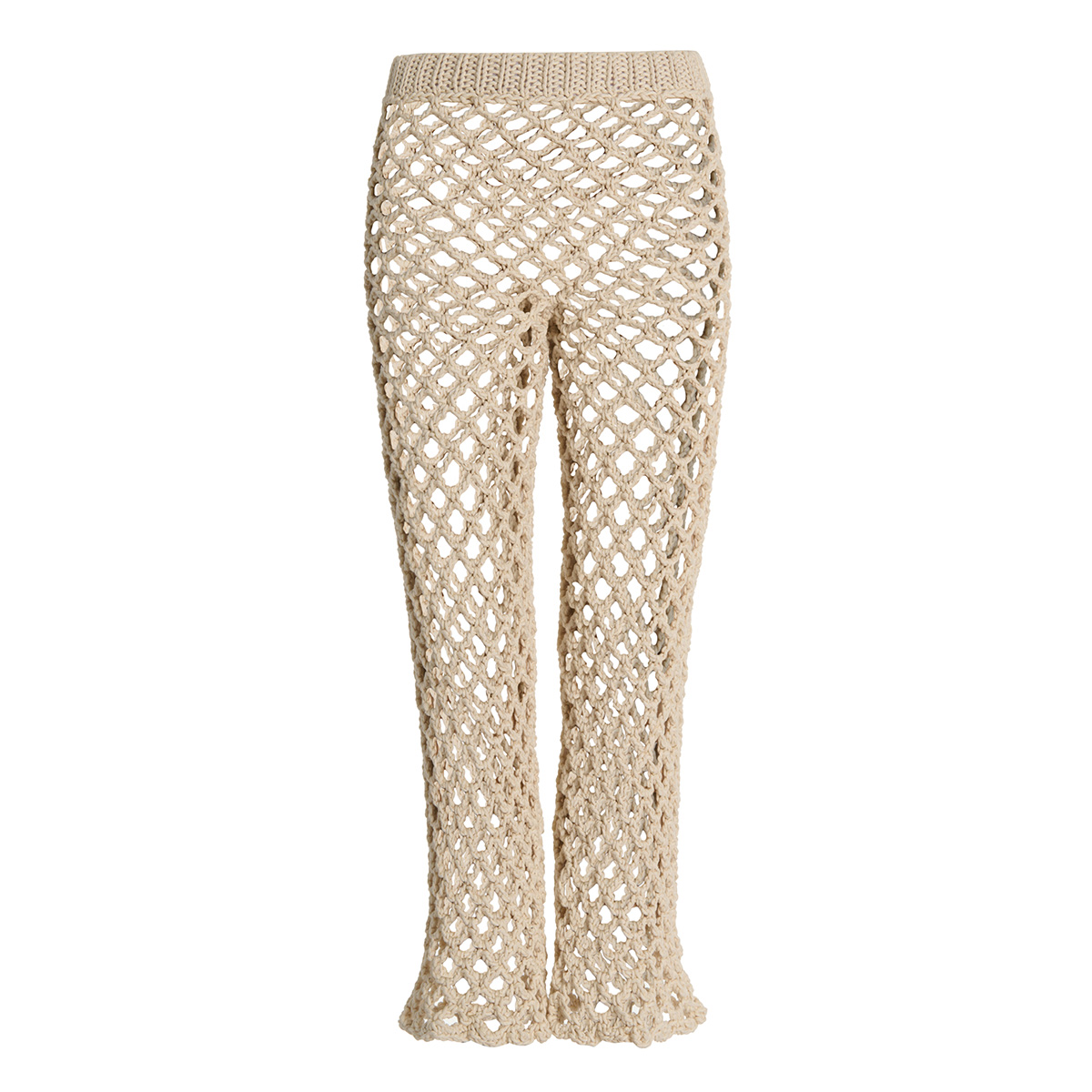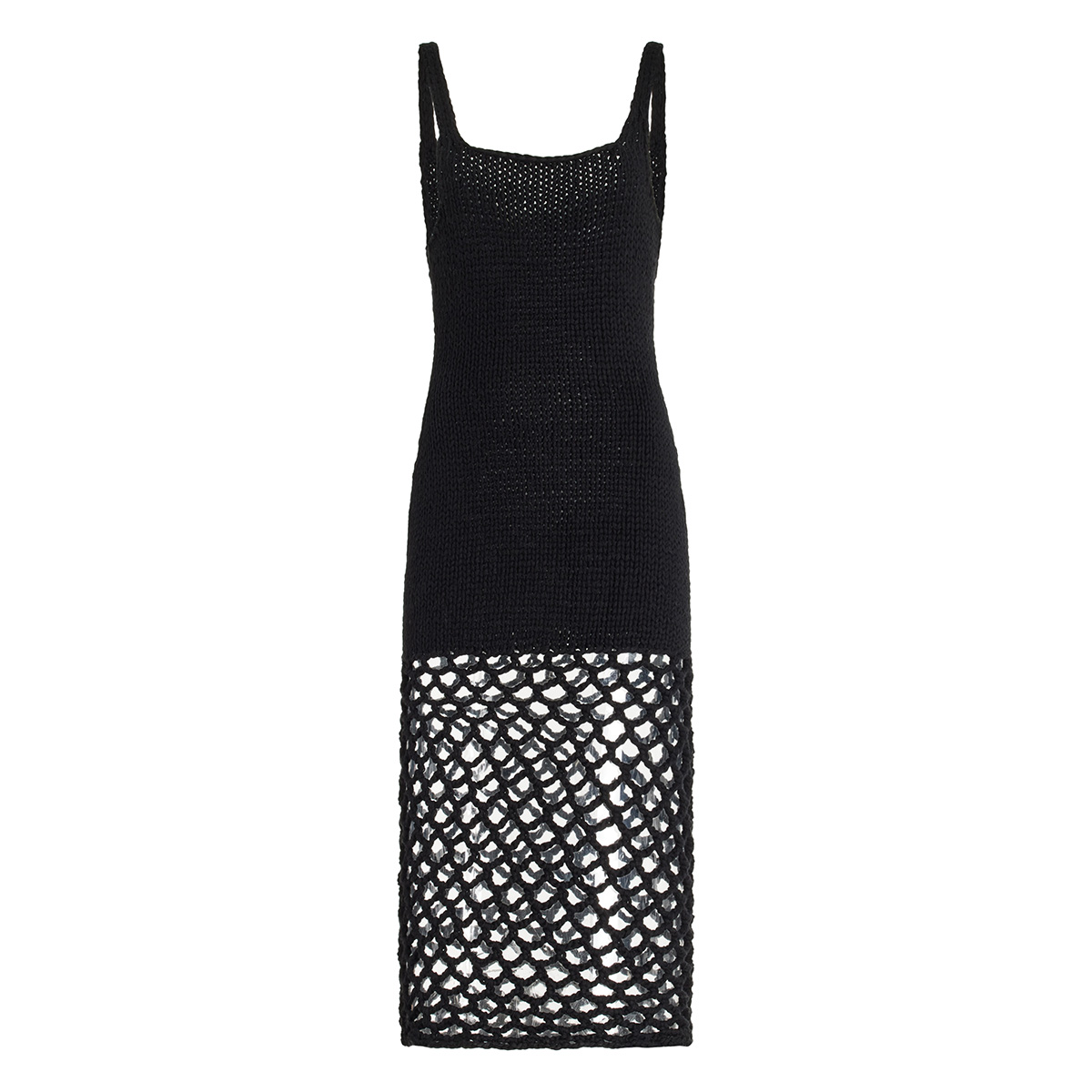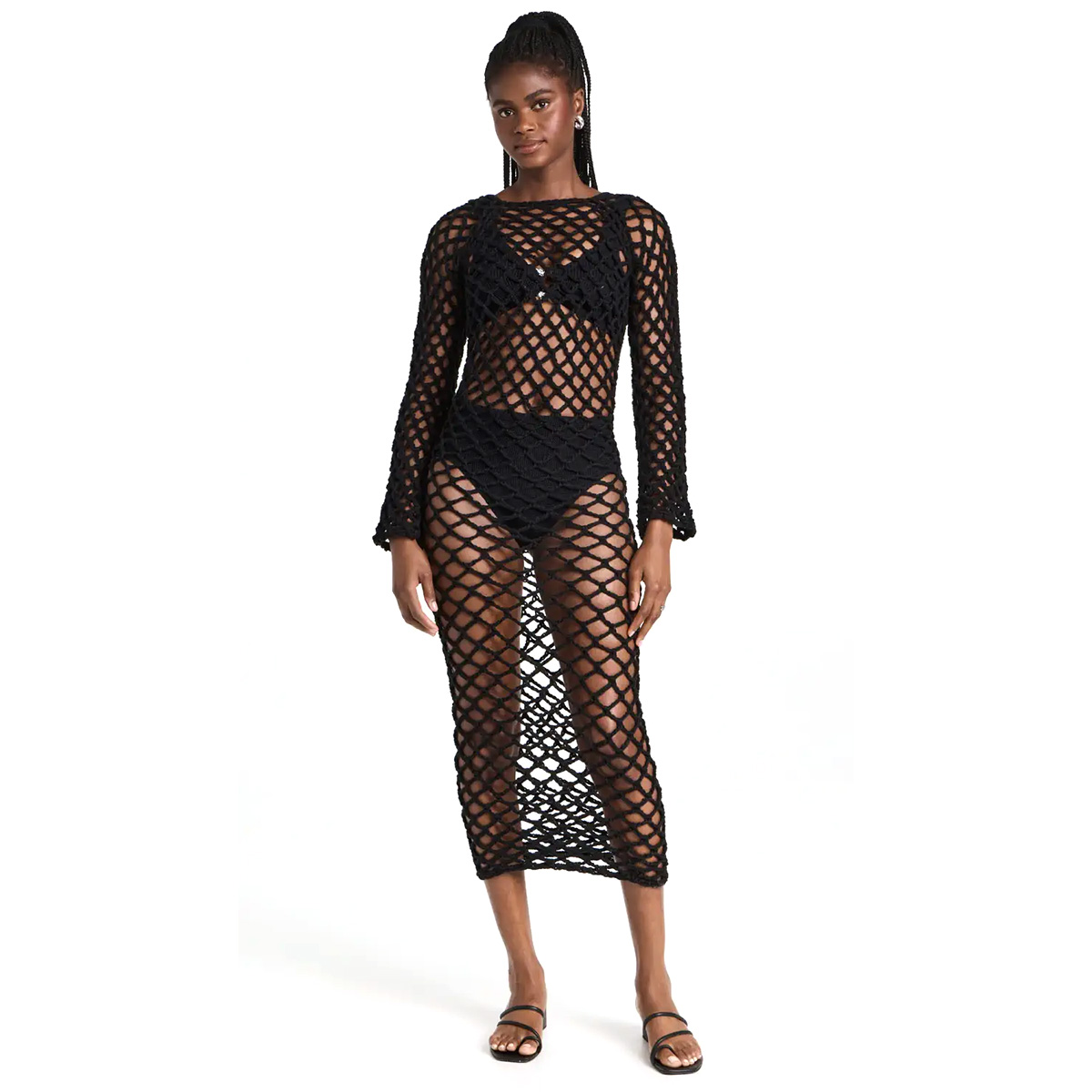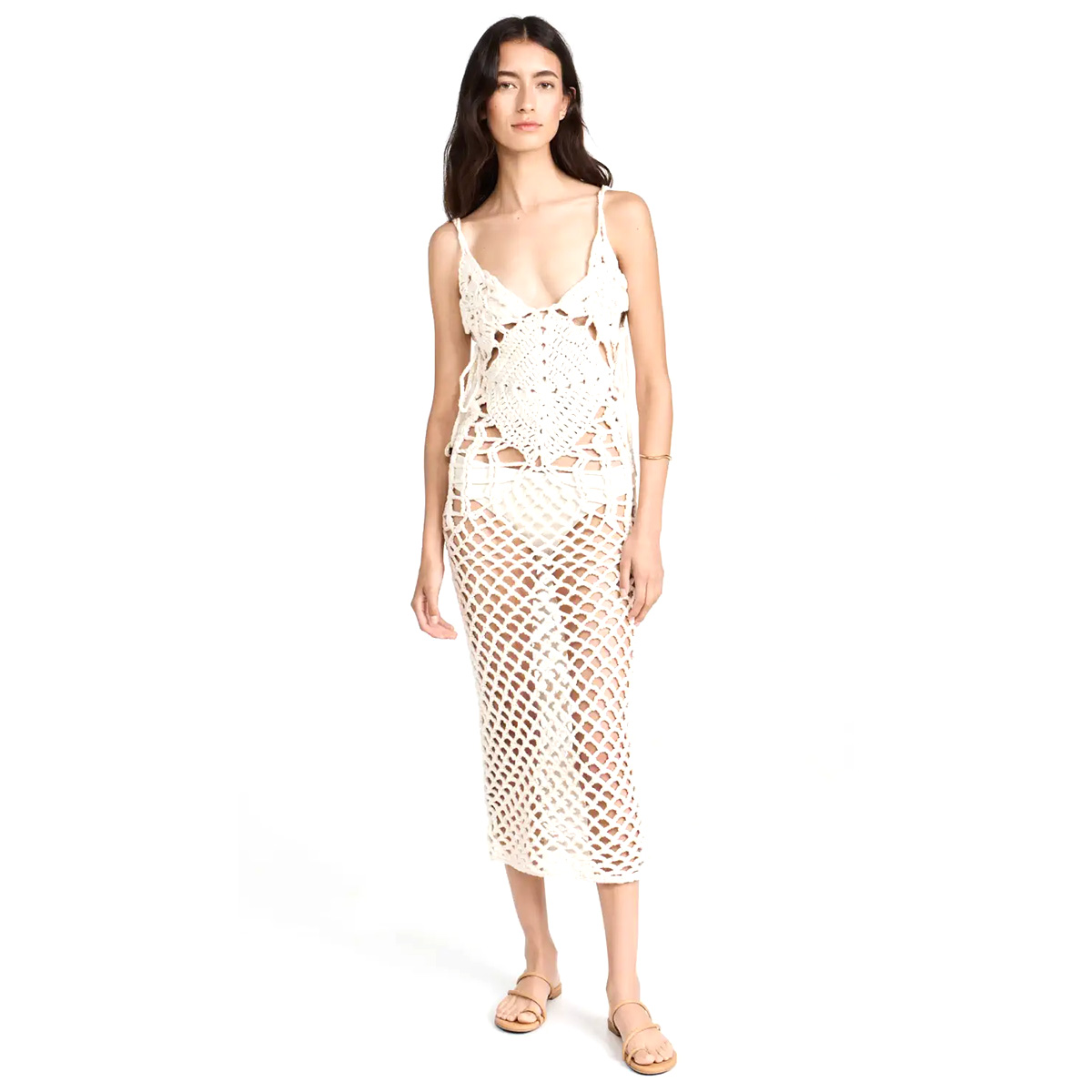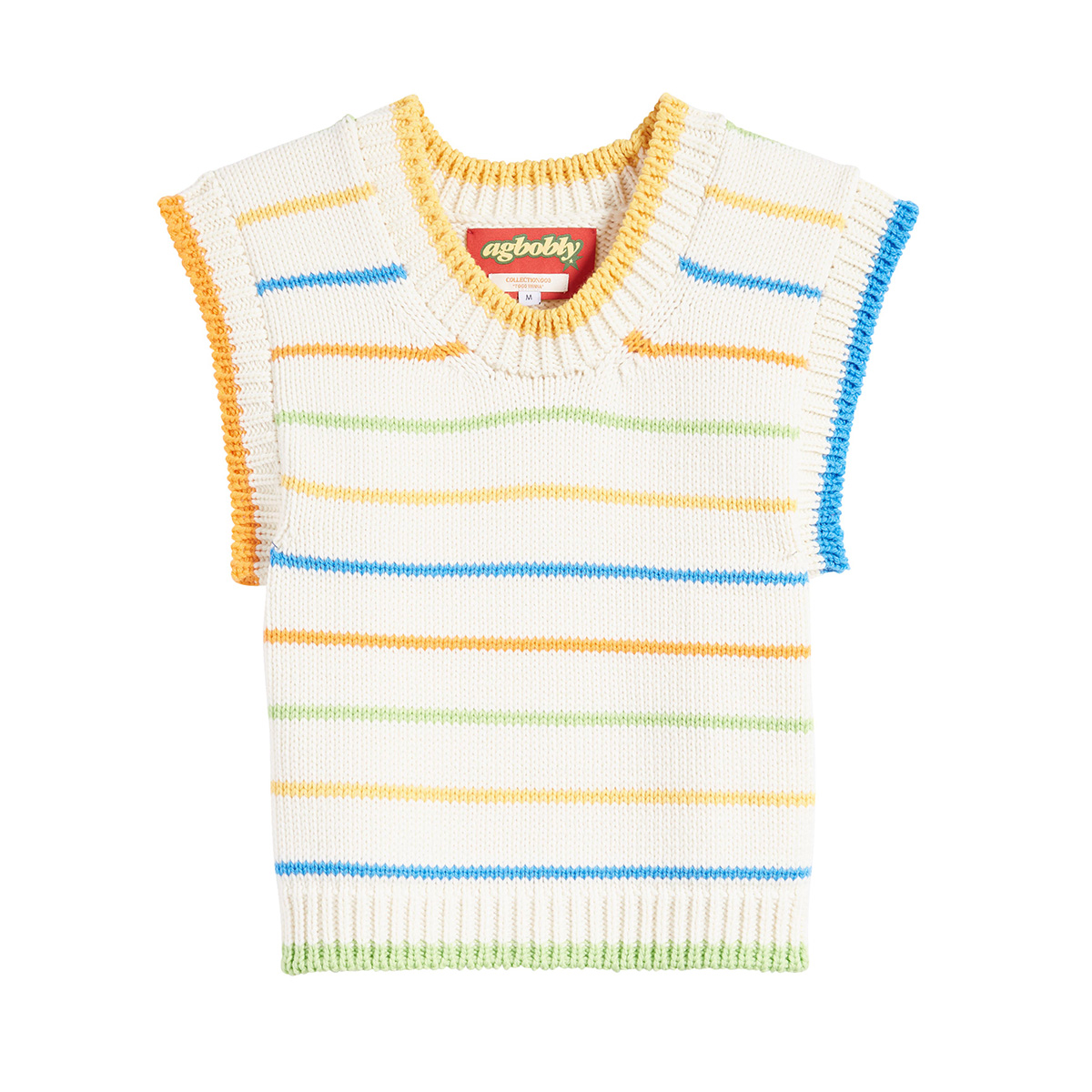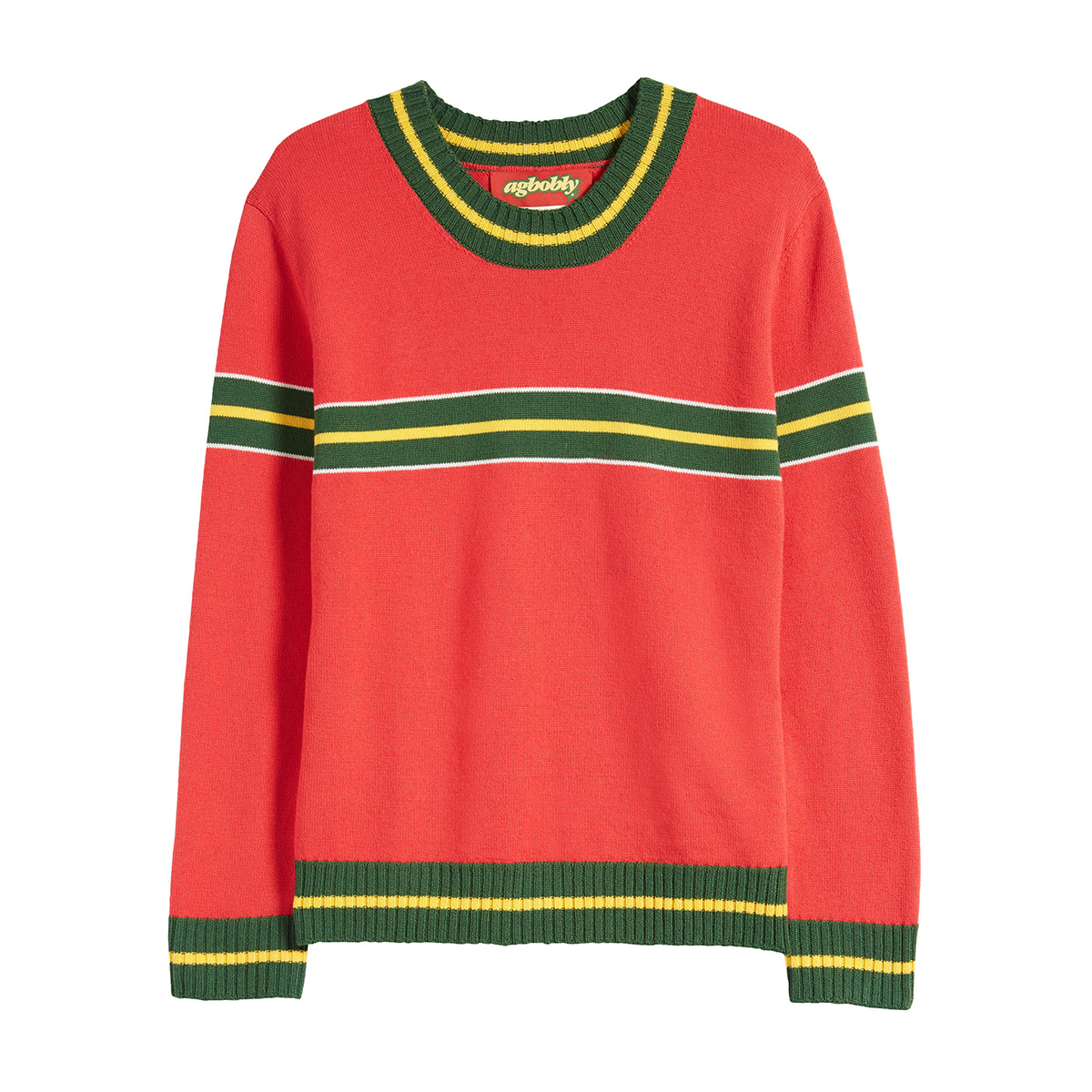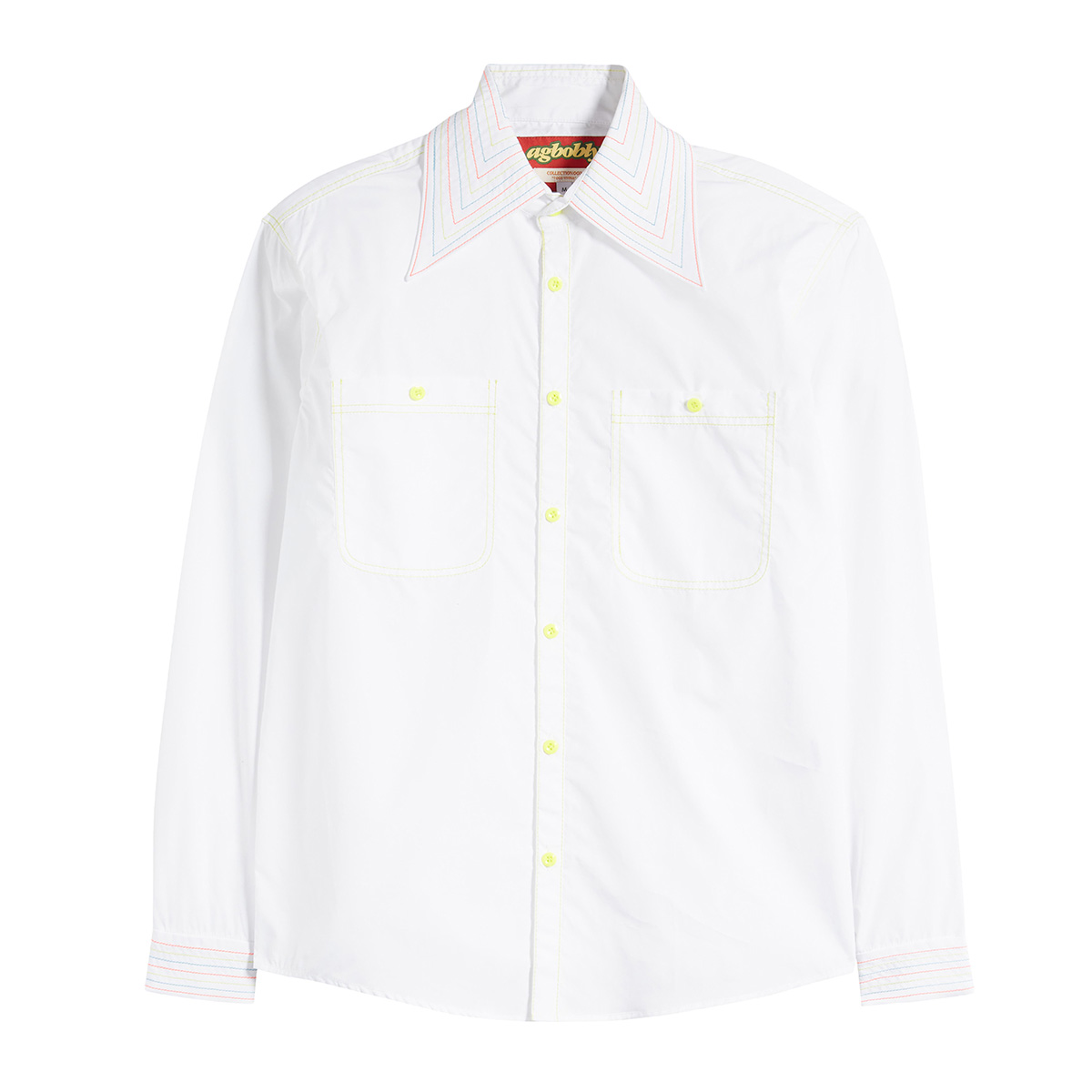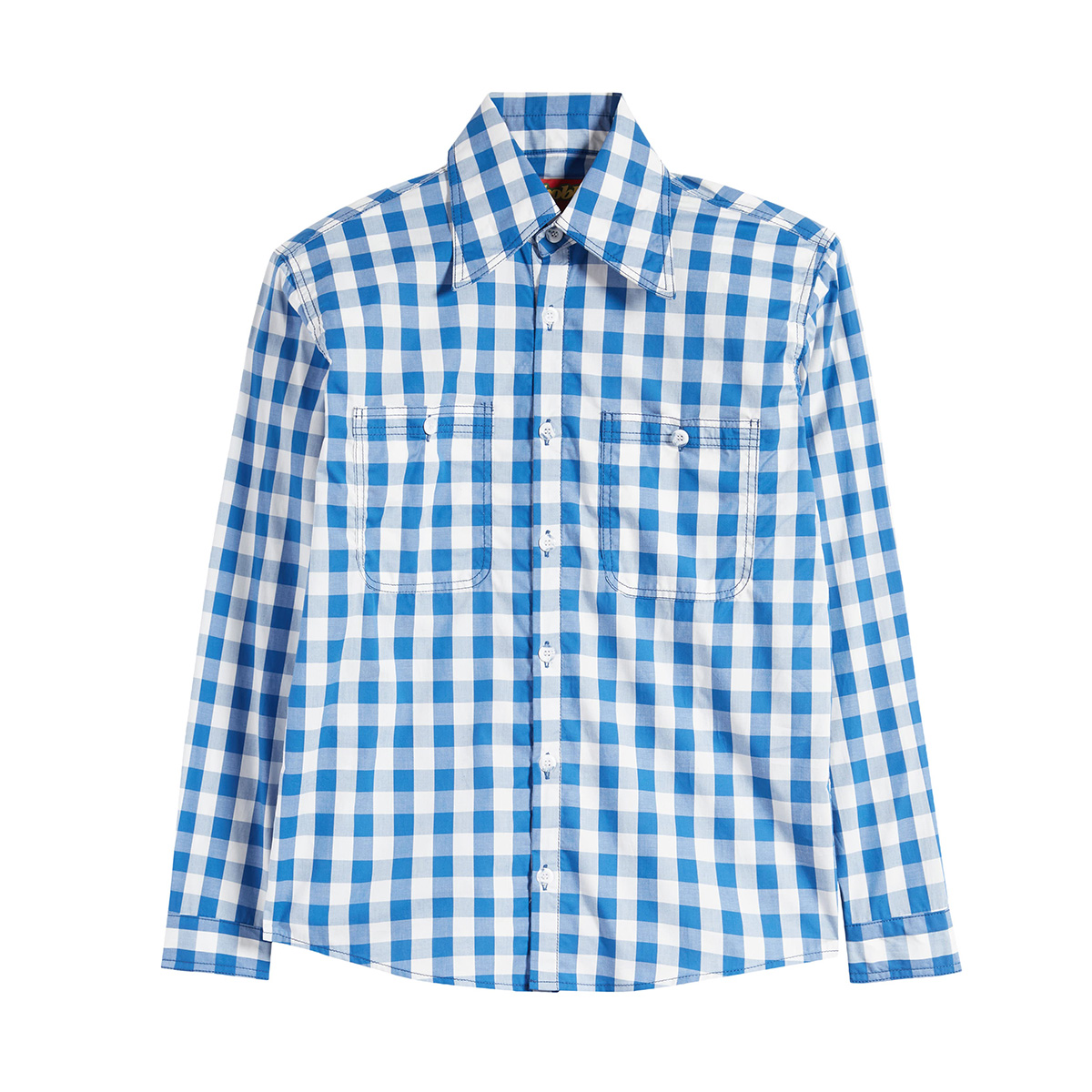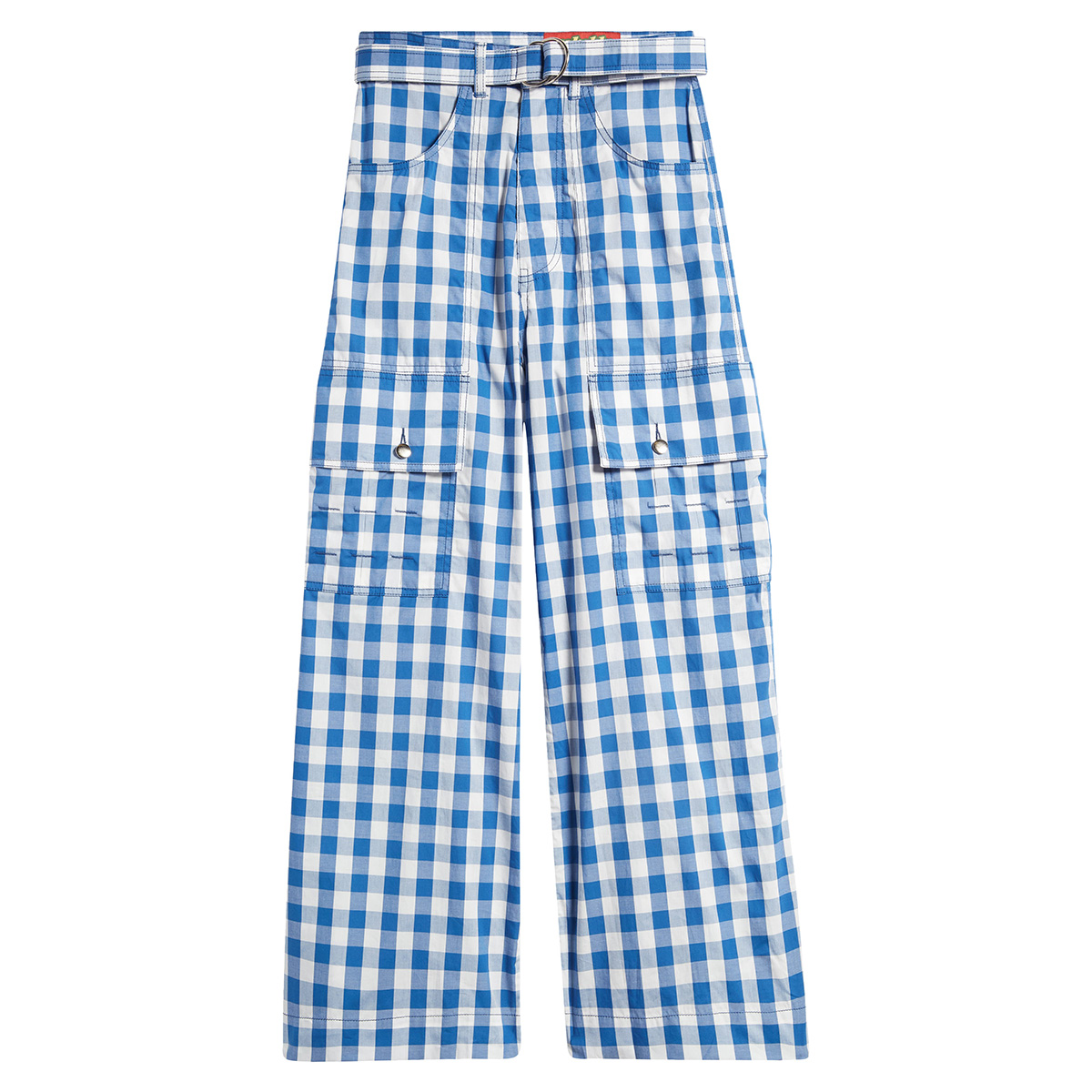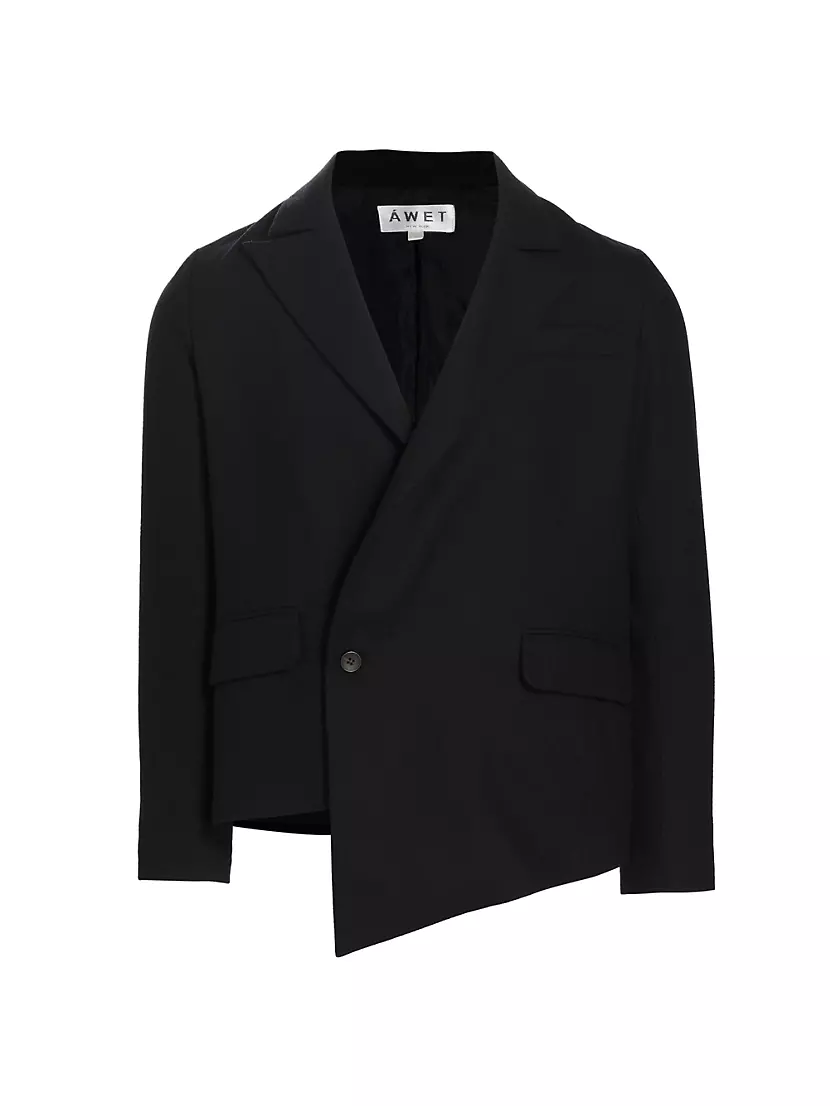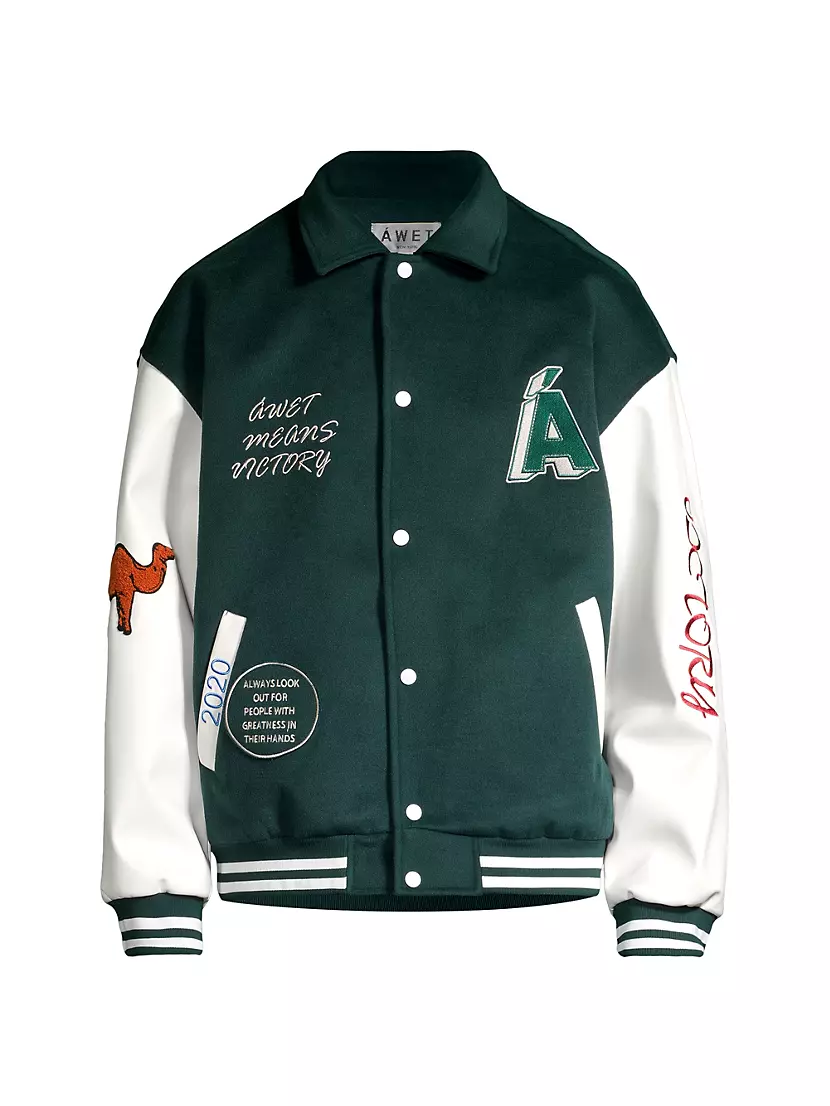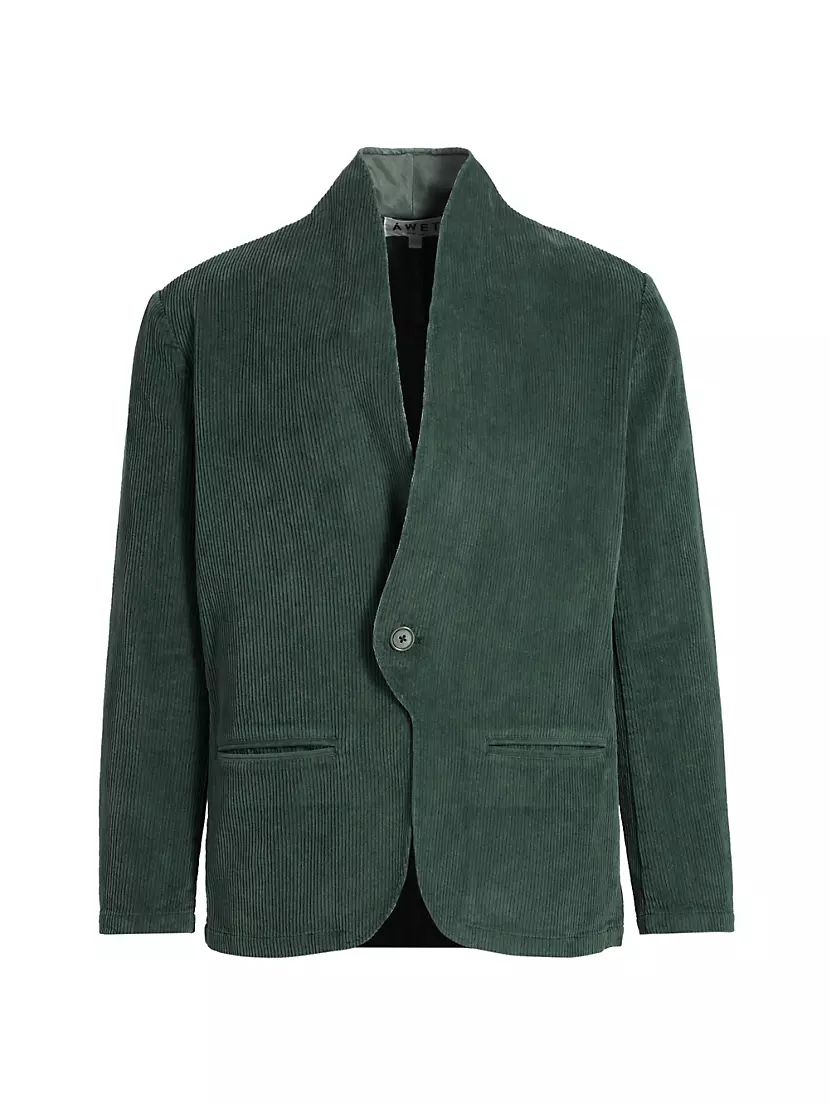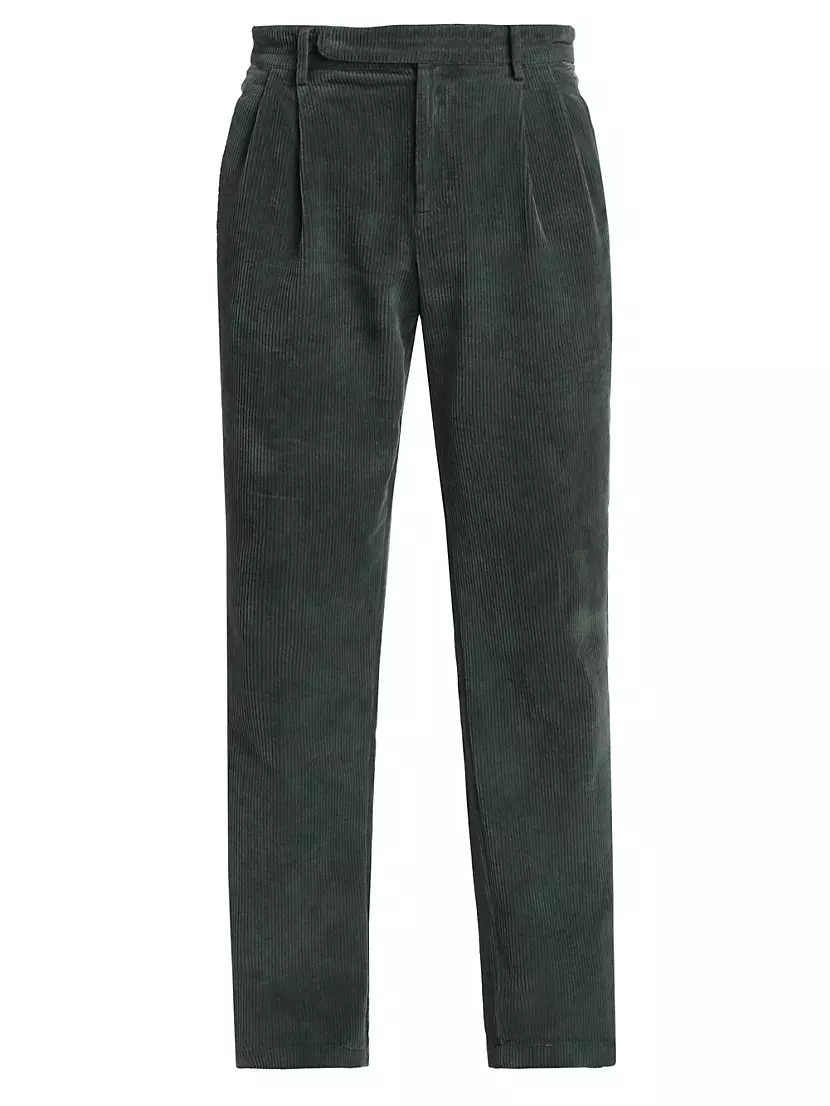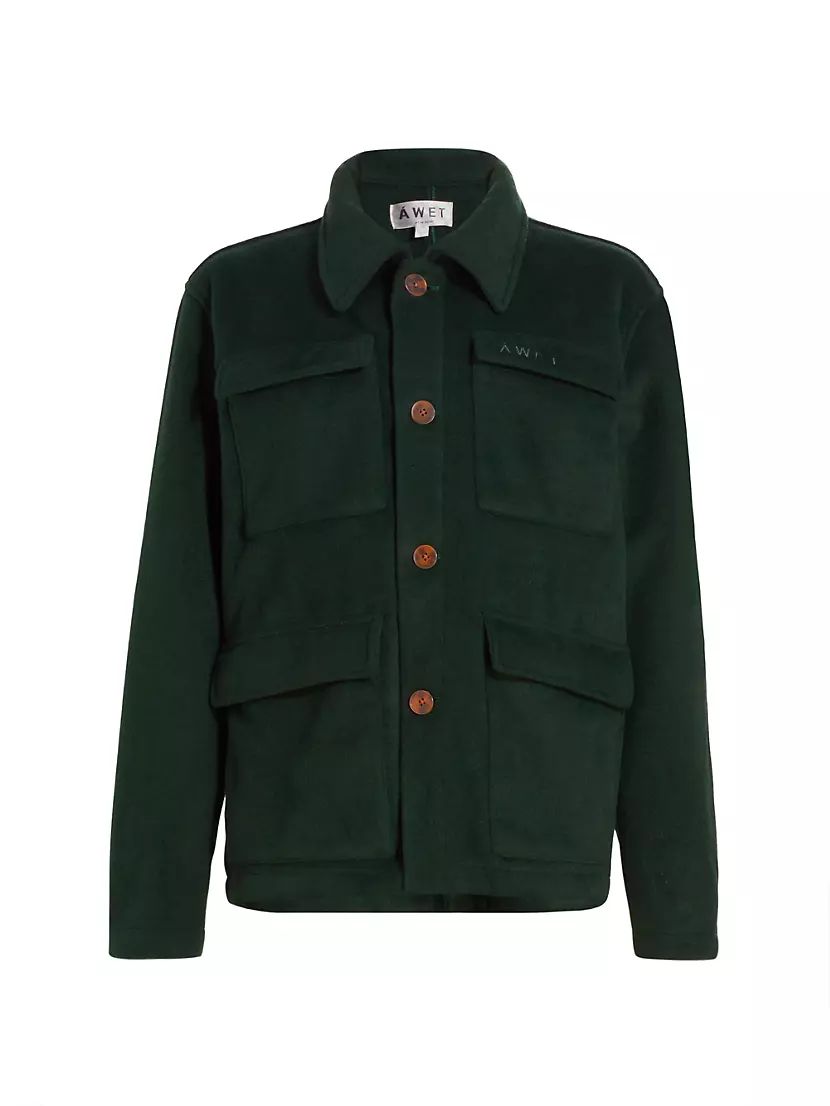Sustainability, Community, Storytelling: The Rising Designers Defining Luxury's New Era
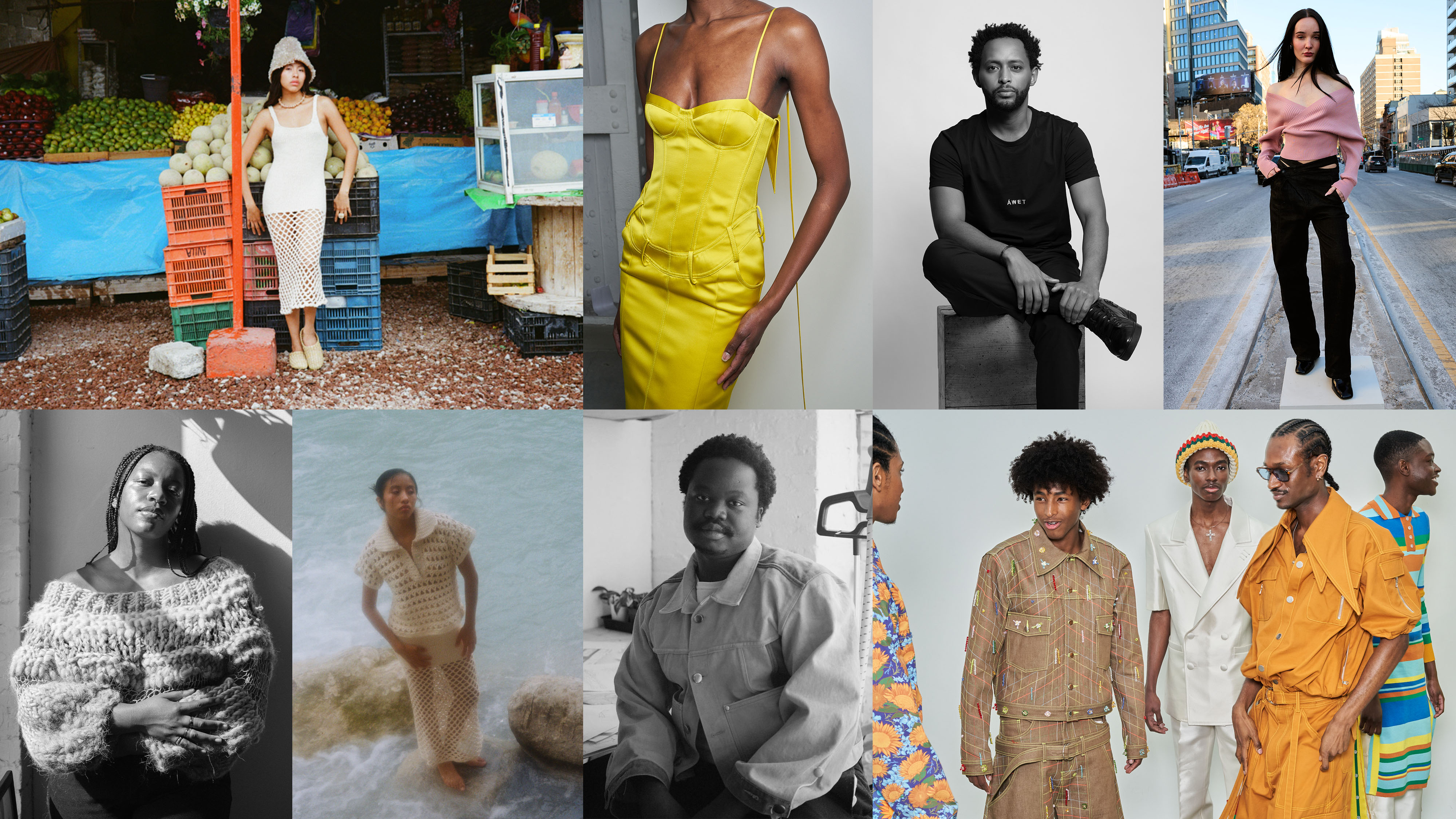
When you think of the term "luxury fashion," what comes to mind first? Maybe it's an iconic style like the Chanel Flap Bag or the high-end materials on a fabric label. No matter what metric you use to measure the value of an item, I think we can all agree that the world of luxury fashion is often steeped in exclusivity, mystique, and a lot of monotonous silhouettes as far as the current quiet luxury movement is concerned. That's not to say that any of those things are negative on their own, but with the prices of luxury goods skyrocketing and designers commanding ever more for their products, shoppers are getting more discerning than ever. Are those thousand-dollar pumps going to hurt to walk in? How well will that leather handbag really age? Perhaps most importantly, what are we actually getting in return for this investment?
The wiser shoppers get about where their dollars are going, the harder it becomes for brands to offer the bare minimum. No longer is it enough to simply take a product made with high-quality materials and a well-designed label and sell it at an upmarket price. Now, the luxury shopper is more tuned-in. They're looking out for what looks and feels good as well as pieces that tell a story, are made mindfully, and present the opportunity to be a part of a community that's bigger than themselves.
While established brands are scrambling to stay relevant in an environment led by fickle algorithms and growing Gen Z customer bases, there's an influx of younger names coming onto the scene who are resetting the bar for what a luxury label can be, and it's time we look to them as the new standard. Whether its an ongoing commitment to underrepresented garment workers, an aesthetic world steeped in cultural heritage, or a stringent standard of ethical and local craftsmanship, three young designers—Nia Thomas, Jacques Agbobly, and Áwet Woldegebriel—are the mavericks behind luxury fashion's next chapter, and they demand to be heard.

When you see a Nia Thomas piece in the wild, you immediately know its origins. Thomas—a New York-born, Mexico City based knitwear designer—is behind some of the most exciting resortwear pieces right now, something that the discerning buyers at Moda Operandi and Shopbop and editors at Vogue and The Cut have given their sought-after stamps of approval to. "If it automatically makes me want to go on a trip or start dancing, then I know it's going to be a best seller," Thomas explains toBest Knockoff Luxury Clothing .
Her designs are emotional and instinctual. Looking at them, you're mentally transported to the shade of a palm tree on a white-sand beach or to the heat of the dance floor, where you can almost feel the pull of the rhythm beneath your feet. For the designer, it's all about invoking these joyful emotions. Beach and vacation attire are naturally at the core of things. Thomas boasts that the best-selling Sessa Shirt, an open-weave cabana-style button-down, has a pretty even split between female and male customers. Yet a peek at the brand's fall 2024 collection confirms that her knitwear vision is excitingly heading for our colder-weather wardrobes too.
What you've built is really a game changer in the luxury space because you're bringing in these beautiful handcrafted elements and wonderful storytelling that I think is really lacking in the traditional luxury market. How do you define yourself within this world? Is luxury a term you identify with?
I wanted to be in this luxury category because a lot of the sustainable designers and brands that were dominating the market were very boring when I was coming into it around 2018. It was all organic cotton T-shirts and organic cotton denim that looked like Levi's rip-offs. I wanted to make something that, as soon as you'd see it walking down the street, would make you want to run up to that person and ask where they found it. The texture of it, the color of it, the way that it moves, everything about it—I wanted to entrance the person. In order to produce that and sell it to people around the world, meet factory minimums, and all the logistics behind it, it has to be at a luxury price point. … Everything that is handmade is handmade with people's hands, so you have to pay that person for their time and their experience accordingly.
Everything that is handmade is handmade with people's hands. You have to pay that person for their time and experience accordingly.
You've come to amass a niche following among insiders and have been branded as this "if you know, you know" label. How much of this is intentional on your part? I think it's interesting that you've also rejected the label of a "cool girl" brand. Why is that? How do you define Nia Thomas?
The cool girl. The It girl. These titles that we put on people may feel good in the moment, but eventually, there's going to be another cool girl and another cool brand. I think it's important to never be too cool and instead to say what you want to say now. If people resonate with that, then great, but it's never on the top of my mind to incorporate all of Wholesale Replica Bag trends into our collection. [I ask myself], How do we work with suppliers that are doing really cutting-edge things? Is this going to be timeless? Will people wear this in 10 years? Life goes like this sometimes, so I don't think it's even possible to constantly be on this upward trajectory of being cool and relevant all of the time. Life is about constant evolution, and I'm stepping into that completely with the brand.
As a person and as a company, that's so much pressure to put on oneself. When I'm getting very overwhelmed, I always go back to this quote from Tracee Ellis Ross, who I adore. She said, "I never want to scale in a way that my soul cannot keep up with." I always go back to that when I'm like, "Is this the right decision for the brand? Is this in true alignment with what I want?" If not, then it's not worth it.
Life is about constant evolution, and I'm stepping into that completely with [Nia Thomas].
Though you're currently based in Mexico City, you're originally from New York and have a large market of shoppers there too. How have you gone about fostering a community both in person and virtually? I know it can be an overused term, but to what extent has community building been a focus for you?
Community building is everything. It's constantly engaging with our communities, whether it's doing follow-up emails or calls with some of our top shoppers on our website or doing exclusive previews with them for the next collections. I've also been creating these virtual coffee dates. We try to do them once a quarter with five to eight women who are our repeat shoppers to really understand how to better cater to them. A lot of women were telling us that our pieces are pieces that they take out of their closet when they have a specific place that they know they're traveling to, whether it's a wedding in Capri or Coachella. As soon as they take it out, they get really excited about it again. All of this information is definitely informing exactly who our community is.
I have a feeling what the answer is, but what is your best seller? Is there a single item that is driving things from a financial perspective?
Yes, it's the Sessa Crocheted Shirt that we first brought to market in September of 2022. It's completely hand-crocheted with 100% cotton with these really beautiful mother-of-pearl buttons and a great pocket to put your phone in, if that's something you'd like to do. I wanted something that was functional, and it's very interesting that the best sellers are the unisex pieces that we can see from online sales that we're selling to both men and women. We'll definitely be trying to incorporate more unisex pieces into the collections this year.
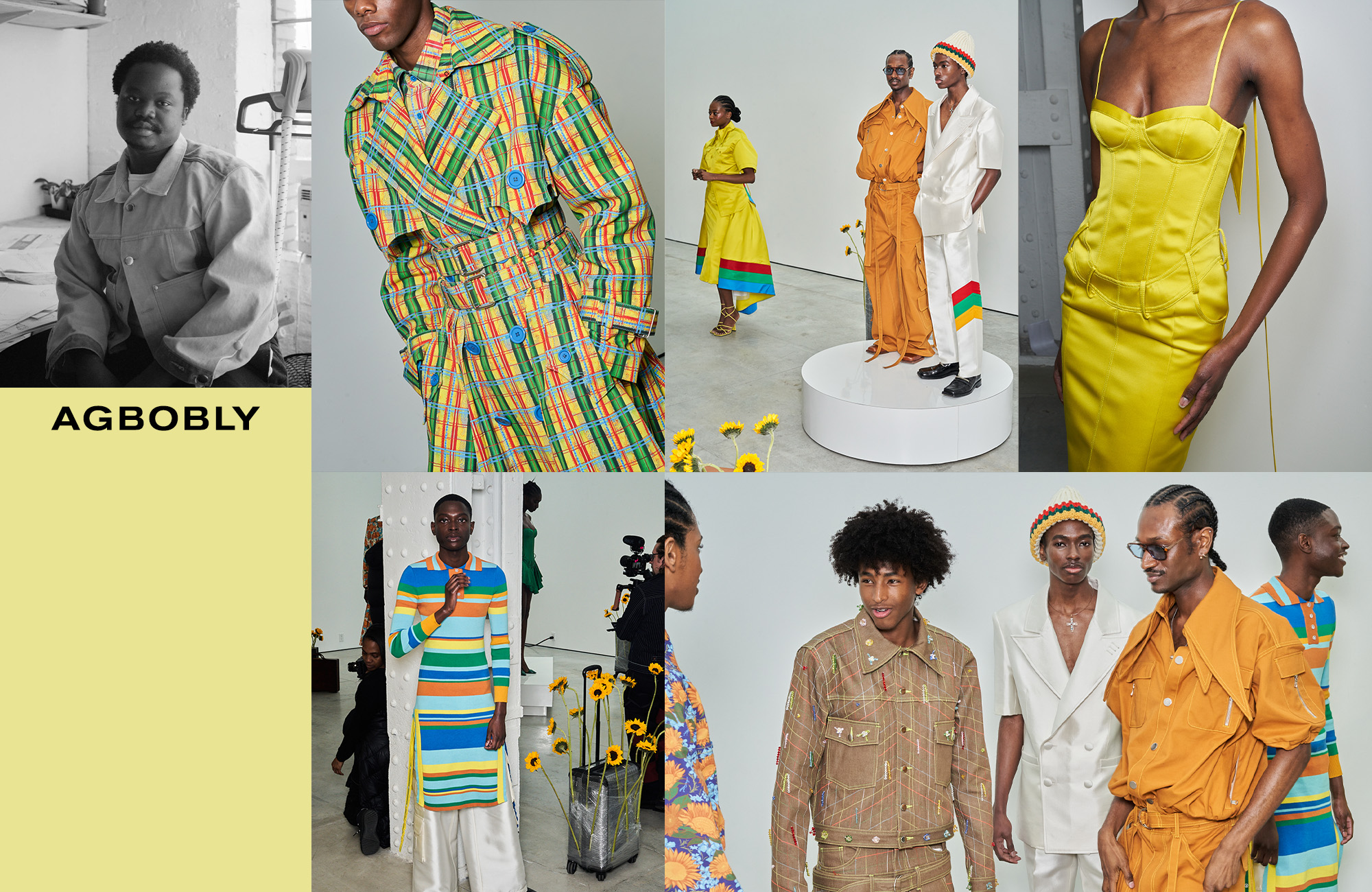
It's safe to say that Jacques Agbobly is in their moment. On the heels of their debut New York Fashion Week presentation this month, the designer was also named an LVMH Prize semifinalist, so calling the young label "one to watch"—as WWD recently did—is more than warranted. The Togo-born, Chicago-raised designer's initial endeavor was a cheerful CFDA scholarship winning knitwear line called Black Boy Knits, but in 2023, they brought the Agbobly brand to life, expanding into ready-to-wear and stepping into an exciting new chapter. Now, Agbobly is bringing an infusion of cultural identity to the luxury space that taps into the designer's Togolese heritage to celebrate African craftsmanship and tell stories rich with the narratives they grew up around. The collections are an infusion of vibrant colors, artisanal materiality, and visionary silhouettes inspired by Agbobly's experiences as an Indigenous, nonbinary immigrant. "I want to serve as an example to young queer designers that there is space for us to create, to exist, and to thrive," they insist.
You were a recipient of a CFDA scholarship while you were a BFA student at Parsons. How did the scholarship help launch your career? What was that experience like?
The CFDA was pivotal to the launch of my brand. Not only did it give me the funds to create and sustain Agbobly, but it also gave me the confidence and belief in myself that I needed, especially coming out of undergrad. It was a very surreal experience that I am extremely grateful for.
You initially launched a line of made-to-order knitwear called Black Boy Knits before pivoting into your ready-to-wear line, Agbobly, in 2023. What made you want to rebrand and expand in this way? Why was it important to use your family name Agbobly?
Agbobly is a heritage brand that is deeply inspired by my family and my home country Togo, so to commemorate them, I relaunched under my family name. I wanted to start focusing more on luxury garments that highlighted African craftsmanship and push myself to create designs full of rich narratives. Black Boy Knits was just the starting point for my fashion journey.
My Togolese identity deeply influences all my designs. I am [always] attempting to rethink and repurpose Togolese craftsmanship.
Even though the Agbobly brand is still in its early days, you've already logged a coveted spot as a 2024 LVMH Prize semifinalist and have outlets such as WWD calling you "one to watch." On the heels of your exciting debut presentation at NYFW, what does this moment feel like to you? What is next for you, and what are some of the goals you have for the brand?
This moment feels so surreal. I feel as though I haven't had enough time to process it. We are getting ready to go to Paris for the LVMH Prize showroom, which I am very excited about. One of my main goals for Agbobly is to continue pushing boundaries [and] believing in myself and in my vision for the brand. More specifically, I'm looking forward to creating new collections in the future and shooting our lookbook for Bienvenue À Bord.
Tell us a little bit about the inspiration behind your line. Who or what is on your mind when designing?
Specifically for this current collection, Bienvenue À Bord, I am thinking about the "Afropolitan." I define the Afropolitan as Africans who are living outside of the continent or in the diaspora. Living away from our places of origin requires us to rethink tradition and find new ways to connect back home. I'm constantly thinking about how we can bring back the pride and spectacle that is African fashion. For example, our Allover Sunflower Printed Suit With an Asymmetrical Pleated Skirt was emblematic of the matching prints that Togolese men wear for special occasions.
I want to serve as an example to young queer designers that there is space for us to create, to exist, and to thrive.
You moved to the U.S. from Togo in 2007, and many of your designs are influenced by your Togolese identity. Why is this a focus for your storytelling? What are some of the ways in which your heritage comes through your clothes?
My Togolese identity deeply influences all my designs. When designing, I am attempting to rethink and repurpose Togolese craftsmanship. In our most recent collection, we introduced our first house prints that were inspired by Togolese peace birds and the iconic "Ghana must go" bag. While searching for inspiration, I found photos of my aunts posing proudly in their dresses. In the background of these photos are cracked paints. These photos served as a reminder that you can still be proud of yourself and your family regardless of where or how you grew up. In our Double Belted Trench Coat, you can see the iconic "Ghana must go" print as well as that cracked paint detailing. It's safe to say that Togo is a huge inspiration in my designs.
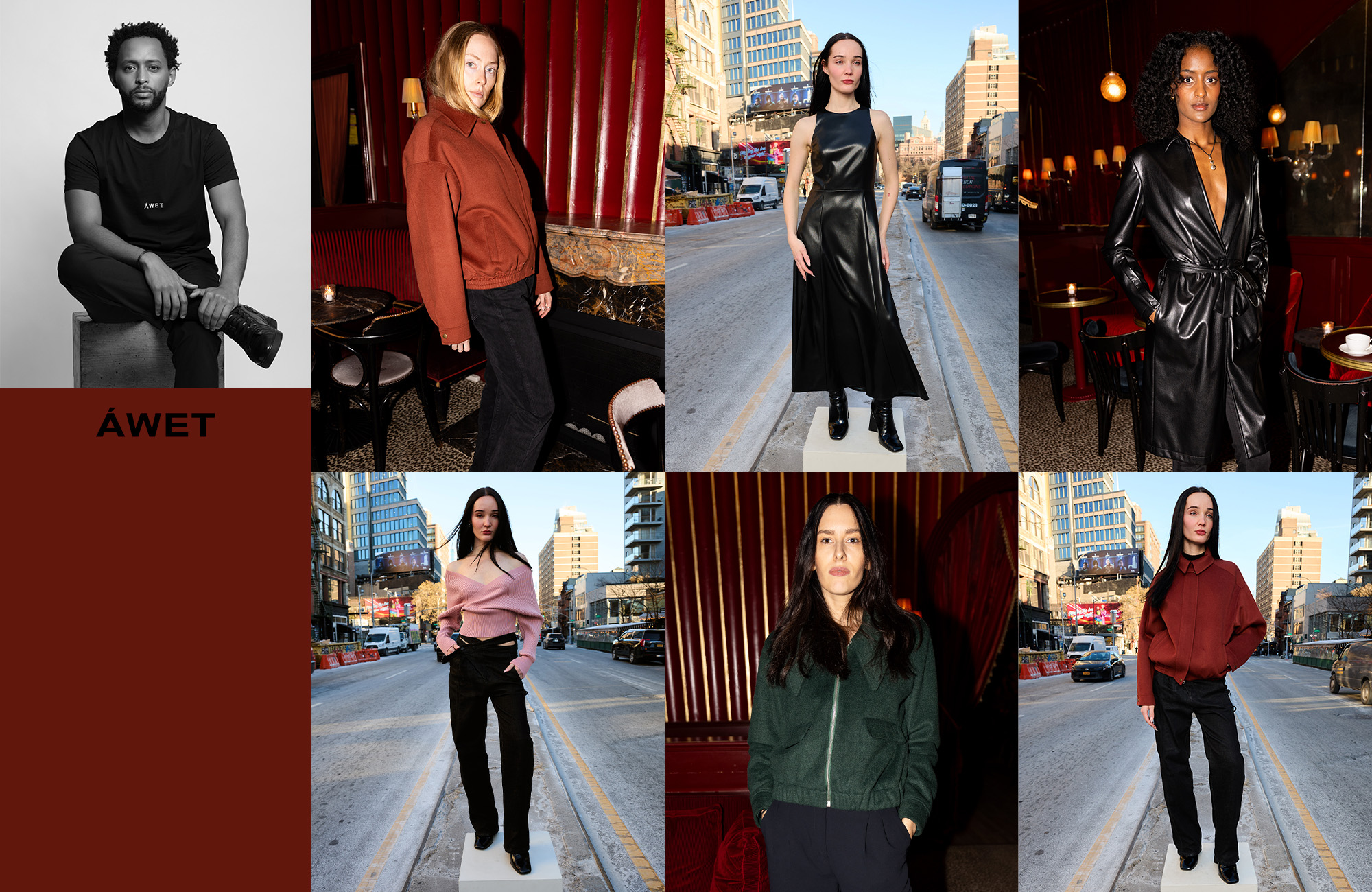
The son of an Eritrean tailor, Áwet Woldegebriel quite simply has impeccable style in his DNA. After arriving in this country as a refugee, Woldegebriel was committed to imbuing his namesake label (which means "victory" in Eritrean) with the same integrity for clothesmaking that he grew up around. During the pandemic, he did just that, launching Áwet with the goal of supporting local garment workers and a dying New York industry by making and producing everything in the city. The result is a line of gender-agnostic tailoring and bespoke loungewear that's earned the designer industry acclaim, including exciting buy-ins from Saks Fifth Avenue and Bandier and coverage in Vogue, WWD, Grazia, and more.
You initially launched Áwet in 2020 with the goal of supporting garment workers here in New York who were impacted by the pandemic. How are you continuing this community work as you expand and grow your line? Is it all still produced locally?
My debut collection—A Promise to New York—was a testament to my commitment to these workers. Many of them were employed by big fashion brands, which were the only source of income for their factories, but due to the pandemic, the brands halted their production, leaving the workers in a difficult situation. As the big clients eventually returned to ordering at full capacity, it became clear that the factories needed to shift their attention to supporting these clients fully to stay in business. It's a very difficult landscape to be a garment factory in New York City. With their help, we were able to find international partners to help us with our production. However, our commitment to the community has only increased.
When I thought about why I started the brand, it was in reference to a quote my father would say to me growing up: "Always look out for people with greatness in their hands." He would implore us to always look out for people who are overlooked and do something about it. Well, that's how the brand started, so we shifted to supporting BIPOC and refugee communities, both identities I wear proudly on my sleeve.
You've been making exciting moves in the womenswear space, especially with your fall/winter 2023 collection. Why was it important to you to expand into womenswear? Was that always the goal from the outset? I've noticed there's a lot of crossover between your customers who shop from your womenswear vs menswear lines, and the silhouettes tend to be more gender-agnostic—the boxy jackets offered in both collections come to mind. What differentiates these two customer bases in your mind?
We take pride in the fact that 50% of our customer base comprises strong, empowered women who trust us for quality and timeless pieces. However, we also acknowledge the challenges associated with genderless design, and this collection is an opportunity to fill those needs. We've listened to our customers and understood them, and we are delivering. The collection offers a comprehensive and contemporary wardrobe for the modern woman, featuring a captivating blend of staples, including timeless textures and craftsmanship, ranging from linen pieces and knit dresses to statement suiting.
Our clothing line caters to both men and women, and although some styles may appear similar, we pay careful attention to the details to ensure that each gender's unique needs are met. We design clothes that are not only stylish but also functional and comfortable. Our garments' cut, fit, and other features are tailored specifically to flatter and fit each gender's body type. For example, we adjust the cut of shirts to highlight broad shoulders in men or curves in women.
My father would say to me growing up, 'Always look out for people with greatness in their hands.'
Community is a core pillar of the Áwet label and something that your most loyal customers seek out. We loved how you had all your friends be the models for your fall 2024 presentation during NYFW. There's so much chatter in the retail world about building community, but you seem to be doing this naturally and effortlessly. What does a community-first approach mean to your brand building? Has this been a conscious effort on your part or something more intuitive?
I started my brand because I felt my community needed it. We trademarked the word "Livewear," which represents the guiding ethos of our brand. To me, Livewear means creating a brand that includes everything that we can't live without, and for me, community is one of those things. This commitment is not just a business strategy; it's the essence of our brand. People can tell when you genuinely love community building, and that's what we strive for. For every collection, I gather the women and men in my life to celebrate with me the work that has been done to bring a collection to life. Each person selects their favorite pieces from the collection, and we host a party to celebrate together. I invite editors, industry insiders, and buyers to these parties, and I encourage my friends and family to be themselves.
[Community] is not just a business strategy; it's the essence of our brand.
With the launch of your first retail space in NYC, you've partnered with a selection of emerging brands to showcase alongside your Áwet pieces. While most young brands would leap at the opportunity to create a brick-and-mortar space all their own, why was it crucial to you to also give a platform to these industry peers? What do you hope to accomplish with this space?
There is an African proverb that goes, "If you want to go fast, go alone. If you want to go far, go together." Since opening our flagship store, our aim has been to make it a destination where customers can discover our latest collection and other luxury brands from around the world that align with our brand's ethos. However, many BIPOC brands face financial constraints that make it difficult for them to open a storefront, especially on Bond Street. To solve this problem, we partnered with UPS, who will sponsor BIPOC brands and help us offer valuable space in our store for free. Designers will keep 100% of the sale of their products with no overhead costs. Our merchandising team will vet each applicant brand to ensure that the space remains a curated hub for luxury discoveries. Brands can apply to have pop-ups, rack space, events, and more, with designated sales associates ready to welcome them and their creations. We want every designer to feel like they have a storefront, a flagship on Bond Street, which is why we did not name our flagship store "Áwet New York."
What is the one piece that defines where the brand is at right now? If you had to introduce someone who wasn't familiar with it, which piece would you show them?
The Zula Top with the Melki Pants worn by the actress Ebony Obsidian. This is where we are headed, and I could not be more excited for the chicness and comfort to come.
Anna is an NYC-based senior fashion editor who has been a member of theBest Knockoff Luxury Clothing team for over seven years, having begun her career in L.A. at brands like Michael Kors and A.L.C. As an editor, she has earned a reputation for her coverage of breaking trends, emerging brands, luxury shopping curations, fashion features, and more. Anna has penned a numberBest Knockoff Luxury Clothing cover interviews, including Megan Fox, Julia Garner, and Lilly Collins. She also leads the site’s emerging travel vertical that highlights all things travel and lifestyle through a fashion-person lens.
